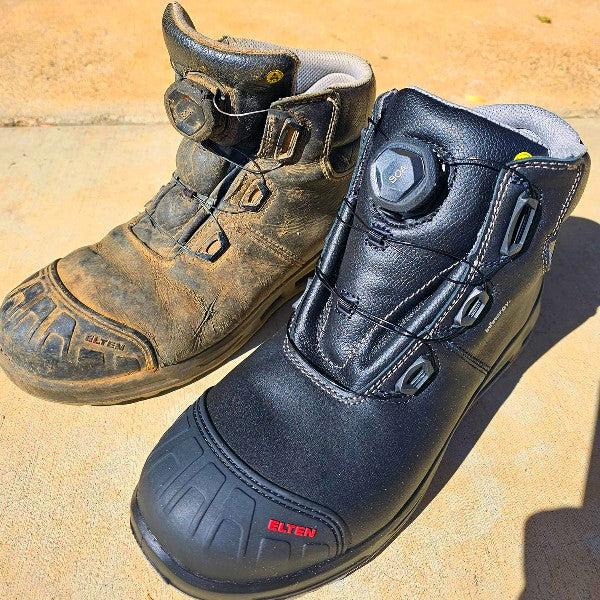When should I replace my work boots?
How long will [QUALITY] work boots last?
Replacing work boots and safety shoes depends on several factors, including the type of work you do, the quality of the boots, and how well you maintain them. Here are some general guidelines to help you determine when to replace your work boots:
-
Visible Damage: If your work boots have visible signs of damage such as cracks, tears, or significant wear on the outsole, it's a clear indication that they need replacement. These issues can compromise the safety and functionality of the safety footwear.
-
Loss of Traction: The outsole of your work boots provides traction to prevent slips and falls. If you notice that the tread pattern is worn down and no longer provides adequate grip, it's time to replace the boots.
-
Lack of Support: Over time, the midsole and insole of work boots can lose their cushioning and support. If you start to experience discomfort or pain in your feet, ankles, or knees after wearing your boots, it might be due to reduced support, and it's time to consider replacement of the comfort insole.
-
Water Resistance: If your work boots are designed to be waterproof or water-resistant and they're no longer keeping your feet dry, it's a sign that the waterproofing has deteriorated and it's time for renewal.
-
Worn or Damaged Laces: Laces might seem like a minor issue, but they play a crucial role in keeping your boots securely on your feet. If your laces are frayed, damaged, or constantly breaking, it might be time to replace them or consider new steel or composite toe caps.
-
Work Environment: If you work in a particularly demanding or hazardous environment, your boots might wear out faster. Heavy use in harsh conditions can accelerate wear and tear, so you might need to replace your boots more frequently.
-
Comfort: If your work boots were once comfortable but have become uncomfortable due to changes in fit or support, it's a good indication that they either the insole required replacement or the support structure of the shoe's lifetime has reached it's end.
-
Manufacturer's Recommendations: Some work boot manufacturers provide guidelines on how often their boots should be replaced based on average usage and conditions. Checking the manufacturer's recommendations can be helpful. An essential component of boot lifetime is the care factor and application of care products the footwear manufacturer is recommending to apply on a regular basis.
-
Regular Inspections: Make it a habit to regularly inspect your work boots for signs of wear and damage. If you notice any concerning issues, it's better to replace them sooner rather than later to avoid potential safety risks.
-
Duration: On average, well-made work boots can last anywhere from 6 months to 2 years or more, depending on the factors mentioned above. Keep track of how long you've been using your current pair and assess their condition.
The product lifetime of a safety boot
Ultimately, your safety and comfort should be the top priority. If your work boots are showing signs of wear, damage, or reduced functionality, it's wise to invest in a new pair to ensure you can continue to perform your job safely and comfortably.
Feel free to contact us on 03 6161 3933 or hello@stitchkraft.co or visit our store on www.sitchkraft.com.au for any further queries you have around product quality and lifetime / durability of your work boots and safety shoes.

